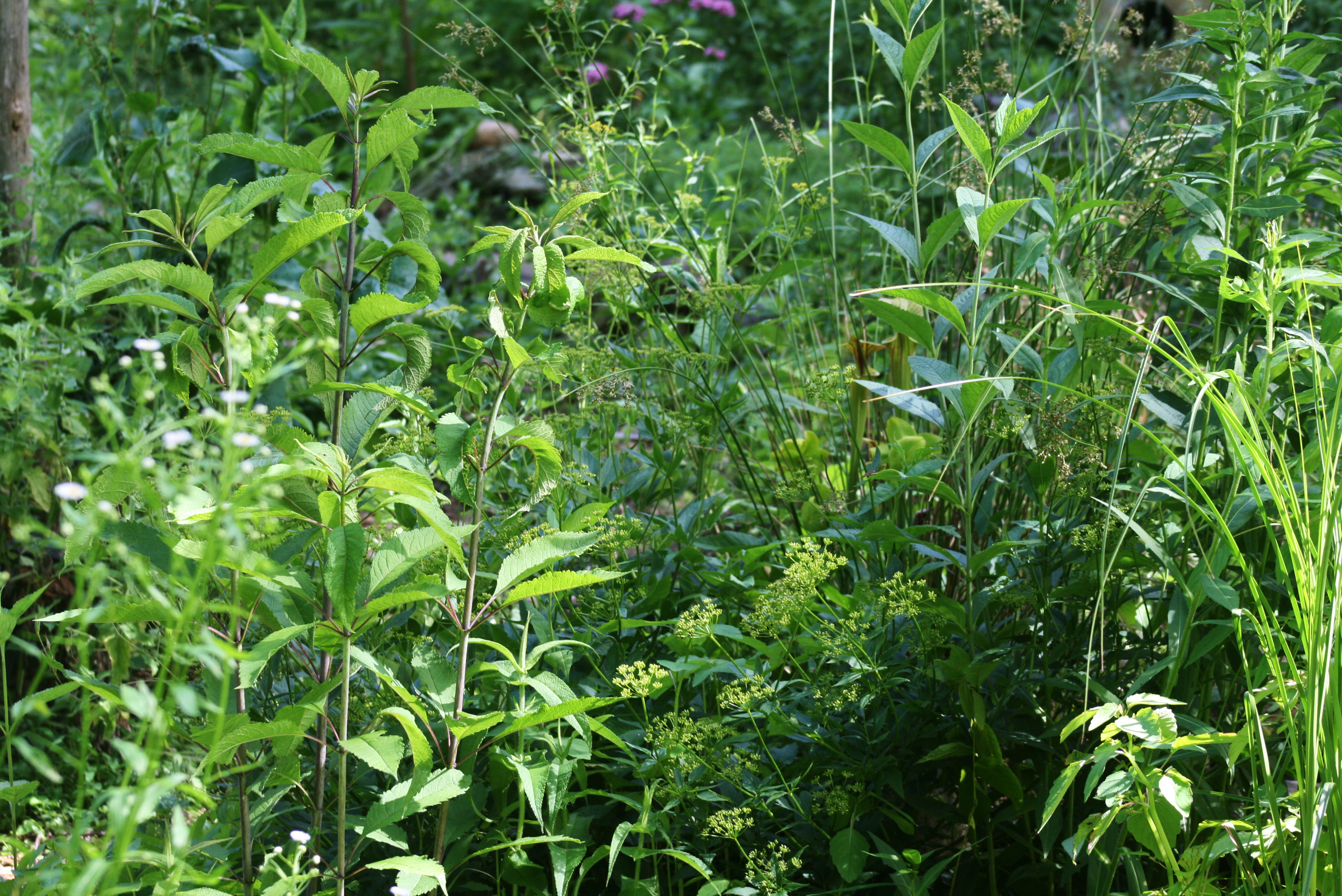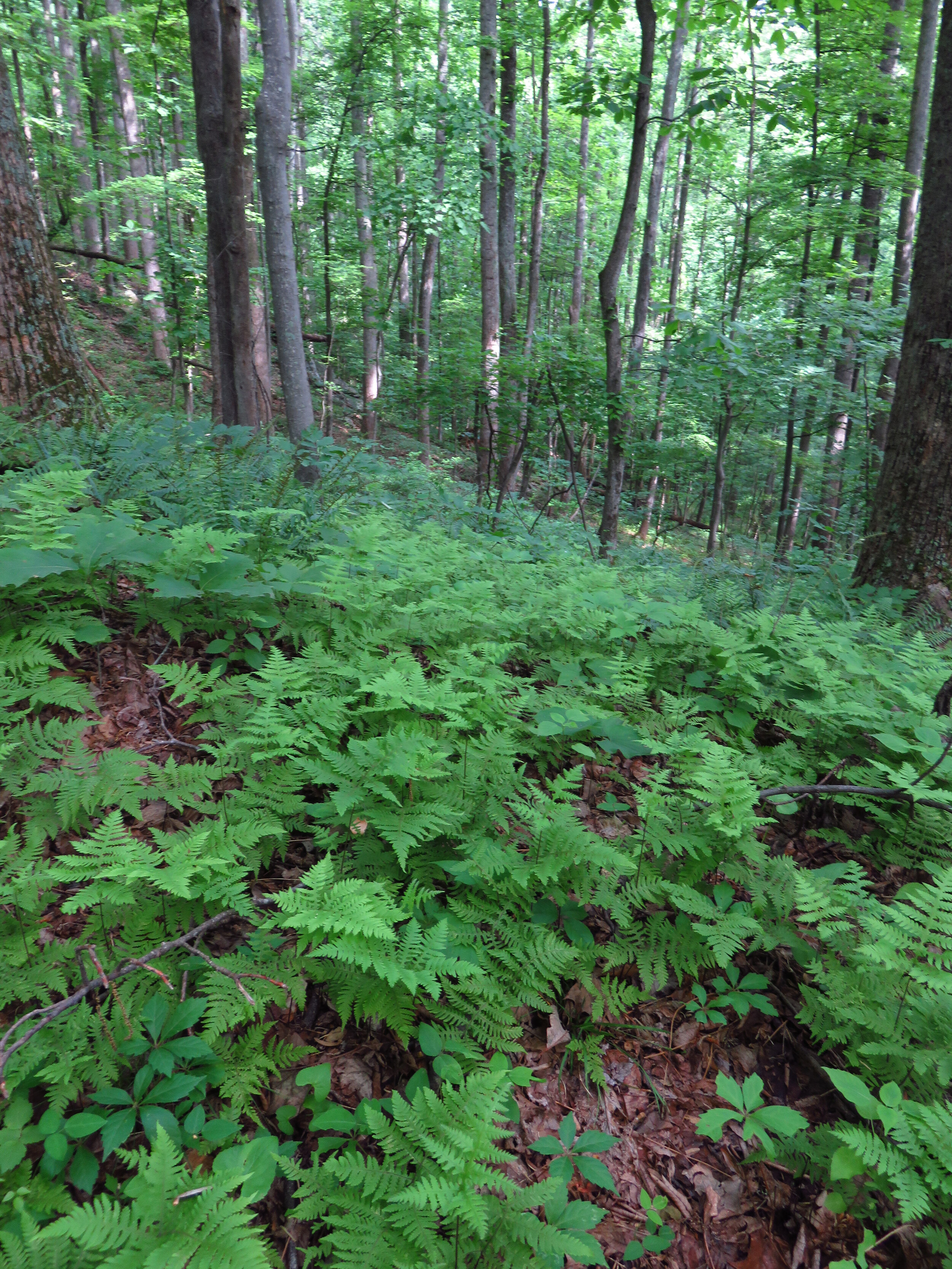
WHY LOCAL GENOTYPE MATTERS
BY BEN KESSLER
Genotype means family. That’s ‘family’ in the every-day sense, not the technical taxonomic definition. You share with your parents, aunts, grandparents, siblings, cousins, a constellation of similar genetic material that expresses itself physically as the family nose, or eyebrows, a predilection for cake, and more generally the way you see the world and choose to interact with it, unique to your particular band of people. 'Local genotype' means a group of families that live in the same place, and who likely intersect and interconnect through marriage, childcare, shared recipes, language, etc. when they're humans, and the botanical equivalents when they're plants.
Hollow Joe Pye Weed / Eutrochium fistulosum with friend
The longevity of plant lineages in place tends to result in an adaptedness to that place that grows stronger with every generation. Part of this is physical changes in the plants themselves- greater efficiency in absorbing and processing locally scarce minerals, internal dormancy clocks that synchronize with the usual seasons of freeze and thaw, a few extra vacuoles to deal with the effects of drought, etc. Another part of adaptation to place is the relationships with the familial lineages of the other organisms who live there- symbiotic mycorrhizal fungi, pollinating insects, herbivorous mammals, soil-dwelling protists, and many others. The plants of a place match their calendars of shoot growth, terpene production, root senescence, and so on to the rhythms of slug birth, nematode hunger, brown-rot sporulation, fawn browse, bee sleep, acorn drop, and a thousand other seasonal dips and spikes in the availability of this or that nutrient, the browsing pressure of this or that herbivore, the protective presence of one or another symbiont or herbivore-eater. These plants have developed this root-level understanding of the cyclical changes in their unique local environment over generations; their children know this land root and branch, the patterns of the land run in their sap.
White Turtlehead / Chelone glabra growing wild in Glass Hollow
When engaging in the work of tending to shattered communities, it is important to introduce new individuals from neighbor populations within the same region. Two Riparian Wildryes, one from a family native to the banks of the Rockfish River, the other from the banks of the Ohio, each have different embodied experiences and ways of interacting with the ecological elements of place. The closer the genotypic family is to the place of planting, the more likely it will be to thrive in local conditions. Certain physical and relational characteristics may overwhelm others- whether they are advantageous to the individual or the ecological community or not.
A “nativar" of Muhlenbergia capillaris
Landscapes change over time. Growing conditions shift, populations of herbivores and pollinators alter in size and composition, frosts come later, springs get rainier or drier. In order to adapt to changing conditions, all of us must draw on the embodied loving care of our ancestors. Every family carries staves of adaptivity- a perspective, a habit, a recipe, a mode of communication, a way of living in the world- that, woven together with complementary osiers from other families makes a basket strong and flexible enough to hold the life of a place through long years of rough journeying.
Where we are affects who we are. Especially so for plants, who spend their entire lives in the same spot. Genotypic families of plants tend to all be located in more or less the same place- the same hollow, river valley, mountain, or watershed. Plants with larger, heavier seeds that are distributed by mammals tend to have smaller family ranges than those with tiny, light, wind-dispersed seeds. Depending on whether or not their seeds are long-distance travelers or not, the family of those individuals may be widespread or localized. Odds are, any two individuals from the same species that you find on the same hillside are probably related. That family may have lived on that hillside for longer than human beings have been present on the continent.
Hoary Mountain Mint / Pycnanthemum incanum & Black Eyed Susan / Rudbeckia hirta in the garden
When a breeding population gets too small, and close family relations have children with one another, the health and resilience of those children and their community can degrade. Everyone knows stories about mentally degenerate and physically infirm kings and princes with their Hapsburg lips, hemophilia, and other tragedies of form and character- the products of incestuous inbreeding by the notoriously insular European royals. Plant populations are subject to the same limitations of scale- not enough new sap and the family lineage can dwindle, weaken, and eventually be overwhelmed by changing conditions. When local populations are large and diverse, this sort of genetic bottleneck is unlikely. As habitat is destroyed and fragmented by industrial activities and runaway construction, however, more populations of wild plants, animals, and others are placed into situations which all but doom them to a lingering decline. Cross-pollinating these artificially separated populations with individuals from neighbor populations within the same biogeographic region can revitalize and empower them to endure until such time as roadways and lawnmowers no longer divide the landscape from itself.
Wild type Andropogon virginicus meadow. Photo credit: Center for Urban Habitats
This is why it is so irresponsible to plant so-called "nativars" bred to appeal to people who don't like the way native plants look, and which feature garishly colored blossoms, irregular bloom times, limited pollen and nectar reserves, poor adaptability to weather extremes, and other less than estimable characteristics. A nativar gene that causes aesthetically deformed flowers may also make the plant harder for symbiotic organisms in the soil to recognize. If that gene happens to be recessive, other, more adaptive characteristics will express themselves. If circumstances conspire to cause the broken-blooms-broken-roots gene to make itself known at a time when the plant population must rely on carbohydrate exchanges through the mycelial webwork to thrive or die, whole swathes of the gene-polluted population could perish, driving the entire familial group towards the creeping death of genetic bottleneck.
A Mesic Forest Plant Community, Photo Credit: Center for Urban Habitats






